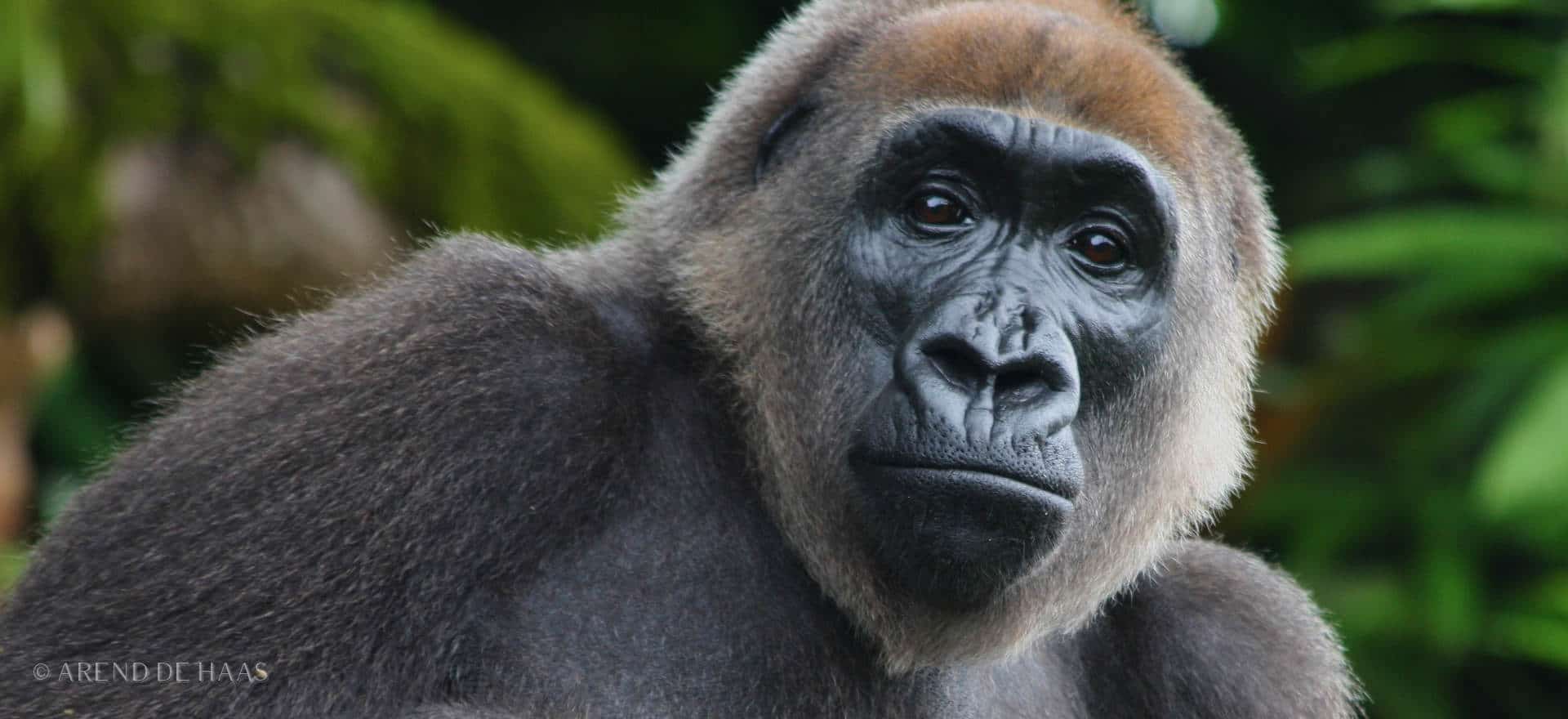HABITAT LOSS
Major threats to the survival of the Cross River Gorilla are habitat loss and fragmentation, hunting, and disease. Gorillas, when caught as infants, have also been traded as pets.
There are few records of the historic abundance and distribution of gorillas in this region. A report from 1957 implies that there used to be more gorillas here, and this tallies with genetic evidence of a recent decline in population size.
As well as being home to the Cross River Gorilla, this region has a large and growing human population. Much of the forest has been lost to agriculture and pasture, as well as logging on various scales. Large areas of grassland have been cleared, and are maintained, by burning in the Bemenda Highlands, at the edge of the gorilla’s range. Accidental bush-fires as well as intentional burning to clear ground, happen across the region, often during the dry season. These can spread rapidly through the forest, damaging large areas and affecting all sorts of animals and vegetation. These fires have caused a rapid transition from forest to savannah in recent years.
It is not just total destruction of the forest that can affect the gorillas. They are shy creatures, distrustful of humans, and can be forced out of an area that is disturbed too often, for example by logging activities nearby, or an intrusive human presence.
The forest is gradually being eroded along its margins, and around the enclaved villages that exist within the Cross River and Takamanda National Parks. The Okwangwo division of the Cross River National Park is in danger of being completely bisected if this expansion continues. Outside the usual gorilla ranges, degradation of the connecting corridors, which have no legal protection, could block migration, causing the sites to become as isolated as they were once believed to be.
There is typically poor road access in this region, with the enclaved villages being particularly difficult for people to travel to and from. For locals this is a major concern, particularly with the difficulty of moving out cash crops for sale, or reaching medical care. By improving transport services however, the environment must suffer. As new roads are built and old ones improved, they are particularly hard-hitting, since as well as destroying habitat and being barriers to many species, they ease access into previously sheltered areas, thereby opening them up for further destruction, and making the forest more accessible for trappers, hunters and collectors of non-timber forest products (NTFPs). Logging also opens up routes which such visitors can follow deeper into the forest, and legal trappers and collectors of NTFPs open up routes for poachers.

